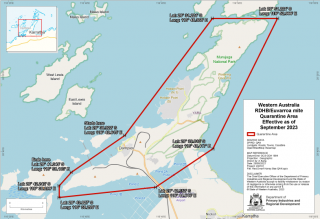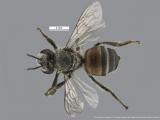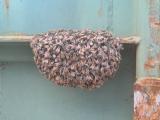Quarantine Area
A Quarantine Area has been declared for the Burrup Peninsula in the Pilbara (see map) to support a biosecurity response to eradicate Red dwarf honey bee. Bee keepers with hives, equipment or those who have collected swarms on the peninsula are not permitted to move them outside the Quarantine Area to prevent the pest from spreading. This QAN has been extended to 30 June 2025. Please see the QAN, along with amendments and maps on the right-hand side of this page.
Affected bee keepers are asked to contact DPIRD’s Pest and Disease Information Service (PaDIS) to advise of hives in the area. Workers, residents, businesses and visitors to the Quarantine Area are required to report observations of unusual bees to the PaDIS hotline or via the department’s MyPestGuide® Reporter app to support surveillance.
Distribution
Dwarf honey bees are native to Asia, commonly found in tropical areas.
The Red dwarf honey bee is naturally distributed from the Indian subcontinent throughout Southeast Asia through to the Malaysian peninsula.
The dwarf honey bee is not known to be present in Australia.
Impact
Red dwarf honey bees are social bees which live in colonies of at least 3,000 insects. They migrate, swarm, and abscond readily, making them a major threat for exotic incursions and to the Australian environment.
One of the major risks for Australia is that red dwarf honey bee (Apis florea) is host to a range of bee brood diseases, parasites, and viruses that may impact European honey bees.
The red dwarf honey bee can carry Euvarroa mite (Euvarroa sinhai) a close relatives to the destructive Varroa mites. The species can also carry Tropilaelaps mites (Tropilaelaps clareae) which is a known pest of European honey bees.
Red dwarf honey bees may also compete with other bees for floral resources.
What to look for
Red dwarf honey bees are characterised by their external nesting habits. Their nest is made up of an exposed single horizontal comb less than 25 centimetres wide that is built around and attached to tree branches or other support, including buildings and shipping containers.
The pest is easily distinguished from European honey bees by their small size in comparison to the European honey bee, being just 7-10 millimeters in length. They have a red/brown abdomen with black and white bands
Look for unusual bees that look smaller than European honey bees or colonies with exposed combs.
Reporting
Early detection is key to protecting Western Australia’s valuable bee and horticultural industries. Immediately report any unusual bees or nests.
Members of the public and workers in the area are encouraged to report sightings of any exotic bees in the area to assist in ensuring no further red dwarf honey bees are present.
If you work at a port or transport imported goods and shipping containers, you must report any sighting of bees associated with these goods. Exotic bees are a pathway for bee pests and viruses so they must be reported
DPIRD Pest and Disease Information Service
MyPestGuide®
Beekeepers
Beekeepers in the Karratha region, including the Burrup Peninsula, are encouraged to report the location of their apiaries to assist with surveillance. Managed European honey bee hives can be reported via this form or by calling the Pest and Disease Information Service (PaDIS) on (08) 9368 3080.
Mite surveillance activities can be reported via our report honey bee mite surveillance results online form
. Please report the locations of wild European honey bee nests using MyPestGuide®. Reports can also be made by calling our department’s Pest and Disease Information Service (PaDIS) on +61 (0)8 9368 3080.





